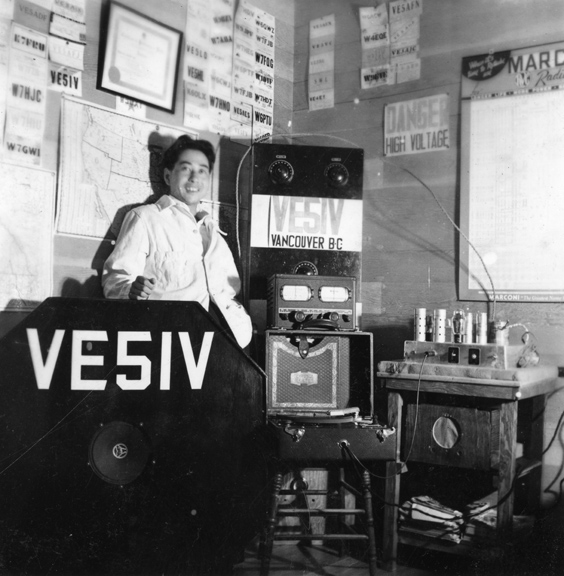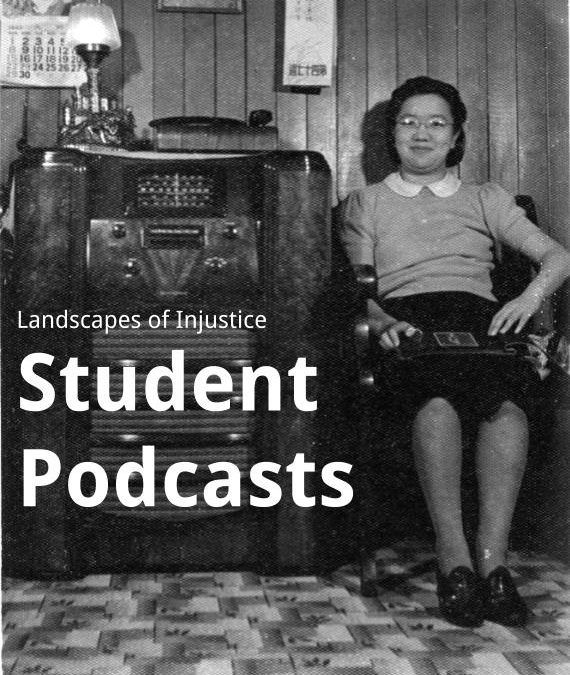Storytelling is vital to Landscapes of Injustice. Soon, we will be in the Knowledge Mobilization phase of our project, when we translate our hundreds of hours of research into communication: databases, teaching modules, websites, and museum exhibits. Having examined the minutia of policy, land ownership, life stories, residential patterns, and law, we will turn our findings outwards to new and important audiences. To do this, we will need to tell stories.
In the winter 2017, upper-level undergraduate students took on this challenge to communicate archival research in creative, accessible ways by creating a history podcasts. The assignment was the culmination of a two-week module in a UVic history course, funded by the University of Victoria Community Engaged Learning grant, designed by Dr. Jordan Stanger-Ross and Kaitlin Findlay, and implemented in Dr. Georgia Sitara’s class, History of Immigration and Ethnicity in 20th-century Canada. The students heard two lectures on Japanese Canadian history and welcomed Dr. Henry Shimizu for a guest lecture on the internment years and the Redress movement. The students conducted their research using a curated version of the Landscapes of Injustice archive.
For many students, this was the first time working with archival material. More importantly, this was also many students’ first encounters with the history of the forced uprooting, incarceration, dispossession, exile, and dispersal of Japanese Canadians. As they navigated the federal, provincial, municipal, and community records to build their podcasts, the students confronted the attitudes and mechanisms that enacted the dispossession. Using voluminous government records, they identified key documents to build their analysis. They crafted compelling, thoughtful podcasts with lively storytelling and creativity. The podcasts reflect a difficult history being understood anew and put into conversation with students’ concerns today. We are excited to share these student podcasts with you.
Rationalizing Racism – Unjust policies and laws do not simply come into being. Rather, they are actively crafted and enacted by individuals who, like everyone else, have their own biases and opinions. Thomas D. Pattullo, Ivan T. Barnet, and Glenn W. McPherson justified the racist policies of the dispossession in differing, complex ways. This podcast explores three letters to unveil how rationalizations of national security and financial costs concealed shocking sentiments of racism and mistrust towards Japanese Canadians. It offers an uncensored examination of the rationalizations that enabled the internment and dispossession of Japanese Canadians. Wolansky mobilizes this history to urge listeners to recognize our own blind spots and biases in the present.
The Soldiers Came First – Why was Gordon Murchison, the Director of the Soldier Settlement Board, so eager to transfer the farms owned by Japanese Canadians from one federal agency to another, at a fraction of their value? Prior to the permission to sell, Murchison sent appraisers into the Fraser Valley to assess the valuable properties. This podcast begins at that moment, in September 1942. It traces the origins of this critical decision, exposes the justifications the state officials espoused, and explains the legal context that allowed them to realize their aims. A close reading of official correspondence reveals the paternalism and racism of government officials empowered by the permissive War Measures Act. For those who imagine Canada as a tolerant, multicultural country, this podcasts will complicate your vision. Upholding Canada as the “great white North” was an active project, as we see in the work of this notorious government agency.
Working in Dissent – Many resisted and protested the uprooting, internment, and dispossession of Japanese Canadians in the 1940s, leaving traces of their defiance in the state archive. European Canadians wrote to their local newspapers to criticize the internment, high-level officials spoke against the dispossession policies, and Japanese Canadians protested the sales of their property and campaigned for fair compensation. Whenever the internment era is breached in history classes and popular media, however, these narratives are obscured by lessons of state violence, racism, and loss. In this podcast, we recover the grass-roots resistance of Japanese Canadians and non-Japanese Canadian in articles, letters, and community news bulletins. An investigation into resistance highlights the resilient strength and agency of individuals. Resistance varied, but its message was shared: people, united and individually, voiced concern about this historical injustice as it unfolded.

A Portrait of Ray’s Radio Station; Vancouver, BC, 2012 .11.397, Nikkei National Museum.

